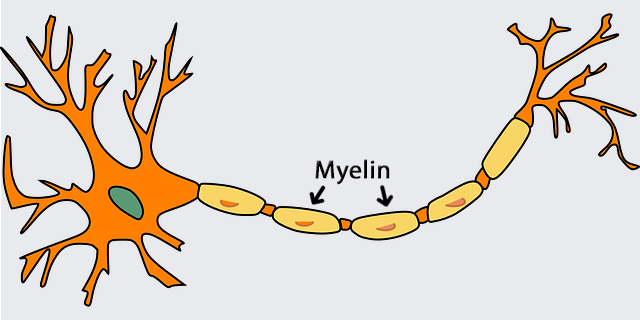Do we need this after a stroke? Have we demyelinated neurons in the brain? What does your doctor know about this and what is the protocol to fix it?
Compound Created To Help Reconstruct Myelin in Multiple Sclerosis
Researchers
have created a compound, that when tested in mice, was able to promote
the reconstruction of the myelin sheath surrounding neuronal
axons. These findings could pave the way to a new treatment for
combating demyelinating conditions such as multiple sclerosis (MS). The
findings were published in Glia.
"I think we'll know in about a year if this is the exact right drug to try in human clinical trials," explained senior study author Larry Sherman, Ph.D., in a recent press release.
"If it's not, we know from the mouse studies that this approach can work. The question is, can this drug be adapted to bigger human brains?"
What is myelin?Myelin is a membranous structure that surrounds neuronal axons (the part of the cell responsible for transmitting electrical signals). Myelin lamellae (cellular protrusions) are formed by fusion of the plasma membrane in glial cells. The lamellae repeat radially at a distance of approximately 12 nm along the length of the axon forming a “sheath”.
 Distribution of myelin along an axon. Credit: Pixabay
Distribution of myelin along an axon. Credit: Pixabay
"I think we'll know in about a year if this is the exact right drug to try in human clinical trials," explained senior study author Larry Sherman, Ph.D., in a recent press release.
"If it's not, we know from the mouse studies that this approach can work. The question is, can this drug be adapted to bigger human brains?"
What is myelin?Myelin is a membranous structure that surrounds neuronal axons (the part of the cell responsible for transmitting electrical signals). Myelin lamellae (cellular protrusions) are formed by fusion of the plasma membrane in glial cells. The lamellae repeat radially at a distance of approximately 12 nm along the length of the axon forming a “sheath”.
 Distribution of myelin along an axon. Credit: Pixabay
Distribution of myelin along an axon. Credit: PixabayMyelin is formed by different glial cell types depending on location. In the central nervous system (CNS) myelin is formed by oligodendrocytes, and in the peripheral nervous system (PNS) by Schwann cells.
Demyelination in MSMS is an inflammatory condition that involves the loss of myelin (demyelination) around axons, disrupting the ability of the nerves to conduct electrical impulses. Only nerves in the CNS are affected by MS. The regions of the CNS where myelin is lost are referred to as “lesions” and appear as hardened scars. The translation of “multiple sclerosis” literally means “many scars”.
Hyaluronic acid and multiple sclerosisThe team had previously discovered a molecule called hyaluronic acid (HA) that accumulates in the brains of MS patients. This accumulation of HA inhibits the maturation of oligodendrocytes. Further studies revealed that HA is broken down into small fragments in MS lesions by hyaluronidases. These fragments act as a signal to immature oligodendrocytes not to “activate” their myelin-producing genes.
The team set out to explore whether it was possible to block the hyaluronidase activity to promote remyelination.
In the most recent study, the team report that the compound S3 (a modified flavonoid) is able to reverse the effects of HA, leading to the remyelination of axons in mice.
"It's not only showing that the myelin is coming back, but it's causing the axons to fire at a much higher speed," says Sherman. "That's exactly what you want functionally."
The team are now beginning to apply the compound to a rare population of macaque monkeys with a multiple sclerosis-like disease known as Japanese macaque encephalomyelitis.
 Japanese Macaque. Credit: PixabayReference: Su, et al. (2019) A Modified Flavonoid Accelerates Oligodendrocyte Maturation and Functional Remyelination. Glia
Japanese Macaque. Credit: PixabayReference: Su, et al. (2019) A Modified Flavonoid Accelerates Oligodendrocyte Maturation and Functional Remyelination. Glia
No comments:
Post a Comment